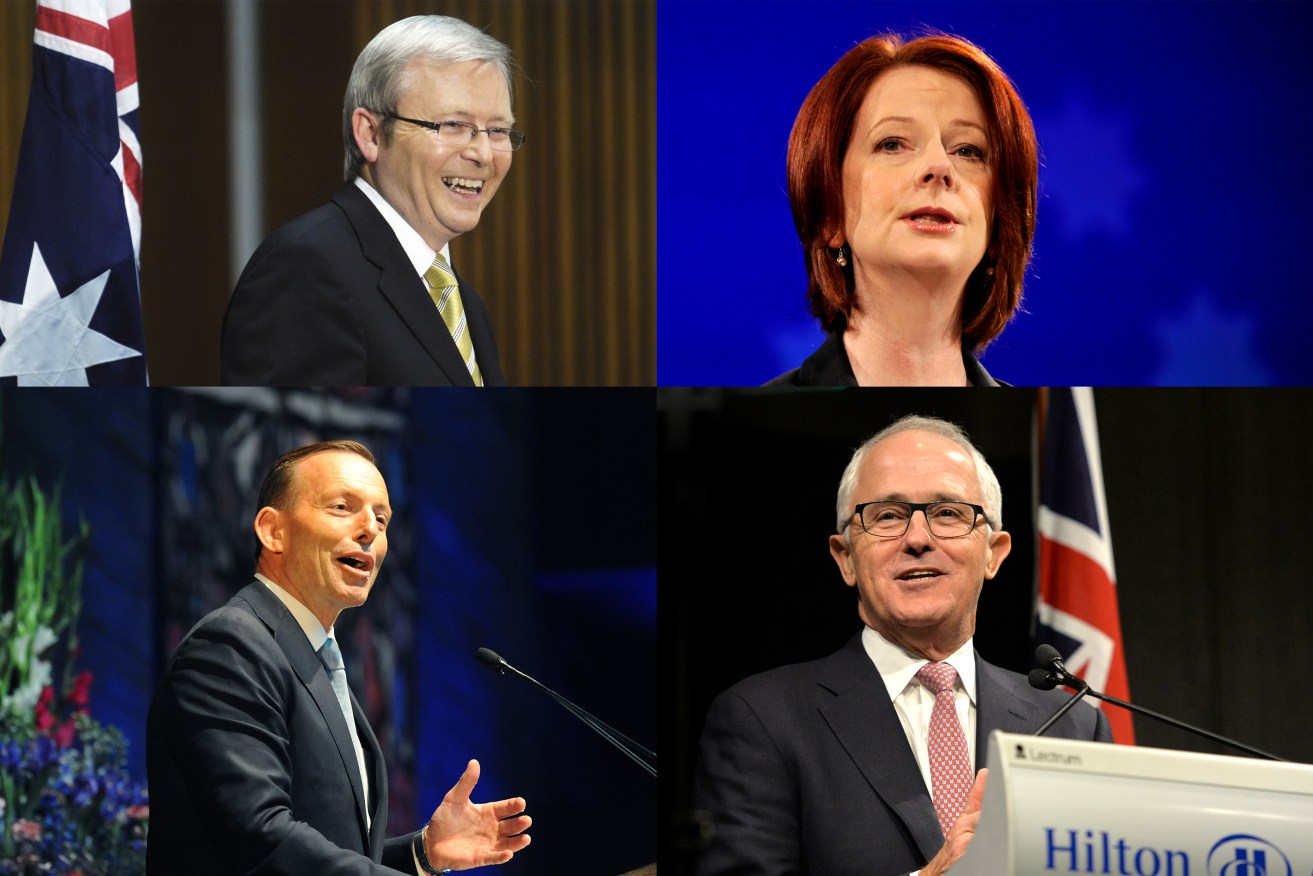Why the Liberals need to resist the Abbott forces
Liberal insurgents seeking to destabilise Malcolm Turnbull ignore the history of the party and threaten to shrink its relevance and representation, writes Chris Wallace.

The Abbott-Turnbull battle is redolent of Labor's disastrous Rudd-Gillard turnstile. Composite image: AAP/Alan Porritt/Joe Castro/David Mariuz
Do politicians read history any more? Liberal MPs who have not read Robert Menzies’ Afternoon Light: some memories of men and events (1967) should get it from the Parliamentary Library and read Menzies’ chapter on “my humiliation of 1941”. He writes:
There was a strong view that, having regard to our precarious parliamentary position, my unpopularity with the leading newspapers was a threat to the survival of the government. It followed that, although they had a warm appreciation of what I had done as prime minister, a change in the leadership was called for.
Menzies resigned, and Country Party leader Artie Fadden succeeded him as prime minister. Five weeks later the government fell: two previously supportive independent MPs switched their allegiance after Menzies was pushed from office. Labor was in power for the next eight years.
Key participants in the current Liberal leadership drama know a similar dynamic is at play. “If Malcolm isn’t PM, Shorten will be,” one says. “If Abbott took over, several people would retire and the government would fall.”
This echoes the Rudd-Gillard-Rudd turnstile, redolent with the same animus. But with fringe right parties feasting on the margins of conservative political discontent in Australia, deeper questions are being asked about whether the Liberal Party itself is at risk.
Menzies famously welded several conservative political entities into a new one, the Liberal Party, in 1945. He then led it to victory at its second general election outing in 1949. Its lineage, Old Testament-style, is this. The Free Trade Party and the Protectionist Party of the early Federation era fused into the Commonwealth Liberal Party, which begat the Nationalist Party of Australia, which begat the United Australia Party which, with Menzies as midwife, begat the Liberal Party of Australia.
Thus party reconfigurations on the conservative side of politics in Australia, while only occurring around the edges post-second world war, were common before it and could be so again. Despite the sulphur and brimstone being whipped up by some commentators, however, this does not seem to be one such moment.

Robert Menzies welded several political entities into a new one, the Liberal Party, in 1945.
https://primeministers.moadoph.gov.au/prime-ministers/robert-menzies
Fringe party flare-ups are common in Australian politics. Since the second world war the Democratic Labour Party (DLP), Liberal Movement, Australian Democrats, the Greens, and Pauline Hanson’s One Nation Party have all influenced the major parties’ room for policy and political manoeuvre. In this context, the latest, Cory Bernardi’s Australian Conservatives, is not unusual.
Nor is having to rely on minor parties or independents to form government unusual. Every federal Liberal government has been a coalition government, in league with the National Party (before the mid-1970s called the Country Party). This is despite Menzies’ private hatred of his coalition partner.
On the rare occasions the Liberal Party has had enough MPs to govern in its own right, it remained in coalition, mindful that forming government in more normal political times is impossible without it.
English academic David Runciman recently observed in the London Review of Books that Britain is now a “40:40:20 nation (where) deal-making is the essence of politics” – the “20” being MPs returned to Westminster from the Scottish National Party, the Liberal Democrats, and the Democratic Unionist Party, among others.
Since governments rarely have a majority in both houses of parliament in Australia, coalition-building and deal-making have always been everyday life in our polity. Minor parties come and go in such equations.
It is ironic that Tony Abbott, singularly incapable of acquiring and practising those skills as prime minister, should so successfully destabilise his successor Malcolm Turnbull who, with the Gonski 2.0 school funding legislation, seems finally to have worked out how to govern.
There is irony, too, in the fact that, as Liberals soul-search about whether to move further to the right, Labor strategists see the Coalition’s vulnerability as not moving quickly enough to the new centre on issues like marriage equality and, especially, the environment.
Affluent, educated, urban Liberal voters’ children are, in increasing numbers, not reproducing their parents’ voting behaviour but rather going Green. Abbott’s drive to double down the Liberals’ alignment with climate denialism could only compound this.
Christopher Pyne is as much a Liberal MP as Tony Abbott, and attempts to portray him as a pinko outlier are a travesty of conservative political history in Australia. Menzies called it the Liberal Party, not the Conservative Party, for a reason: he intended it to be a “broad church” of conservatives and liberals, not least because he understood how difficult it is to win office without bringing the centre along with you.
While mouthing “broad church” rhetoric, John Howard drove liberals out of the Liberal Party, and persecuted those, like Pyne, who survived the scouring. This shrank the liberal ballast protecting the party from an even sharper lurch rightwards.
Turnbull isn’t very good. “We limp towards defeat,” one Liberal wanly puts it. But that could be so much better electorally than the alternative. If Abbott again becomes the public face of the Liberals, prepare for it to become a very small party indeed.
Chris Wallace is an ARC DECRA Fellow at the Australian National University.
This article was originally published on The Conversation. Read the original article.




